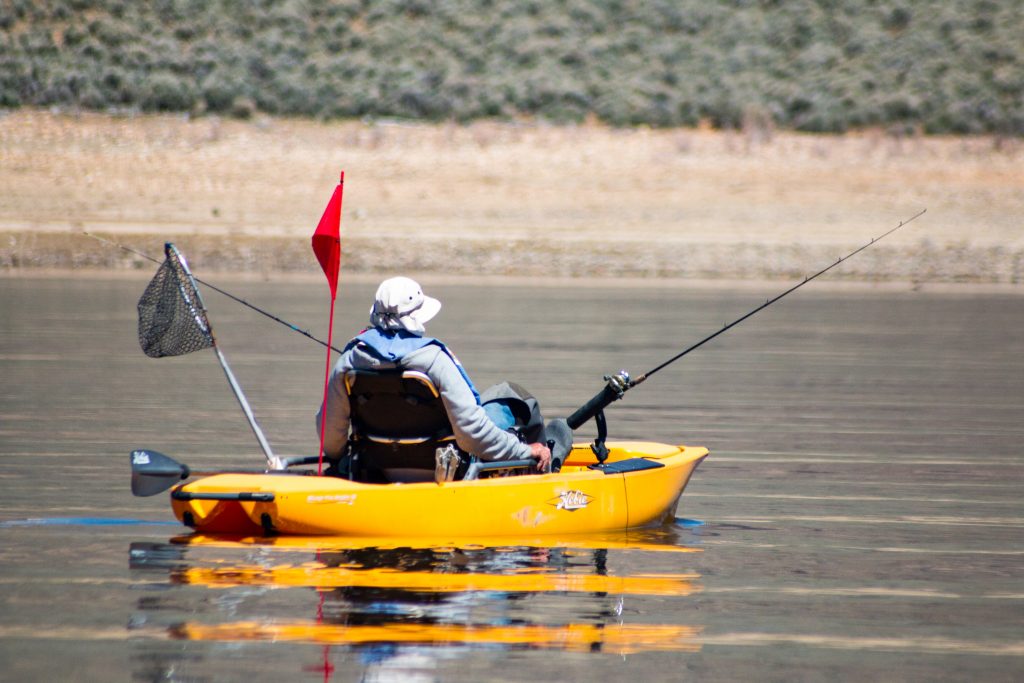7 Kayak Fishing Tips For Beginners

By Anna Burress
Kayak fishing is a unique experience that any practiced angler should try at least once, for a number of reasons. For those who love to spend their time on the water, kayak fishing is inexpensive, easily transportable, eco-friendly and a great source of exercise. Not to mention, kayak fishing allows you to launch from anywhere, making the possibilities endless!
If you’d like to try your hand at kayak fishing, consider these 7 tips before you hit the water and you’ll be all set for an exciting, relaxing adventure:
- Pick the right kayak
A fishing kayak is designed specifically for the sport with rod holders, rails, mounting plates, angles and materials that ensure an efficient and smooth time on the water. There are definitely cost-effective options to choose from when you’re just starting out, but if you’d like to invest in the sport long-term, it’s worth looking at a few higher quality options as well.
There’s also your setting to consider. If you plan to fish in a lake or a pond, such as Clear Lake or Lewiston Lake, you’ll benefit from a different model than one built for rivers or one built for salt water, like Monterey Bay. Each has their own nuances that make them unique for different experiences, and some of the various locations have specific regulations when it comes to your vessel.
- Invest in your paddle
Your paddle is your main navigation tool when you’re in a fishing kayak, so it’s important to make sure you have something reliable to get started. Many anglers opt for a lighter weight paddle to save energy while on the water, but there are other options as well that may be more cost-effective. Regardless of the model you choose, it can help to tether it to your kayak so you don’t lose it.
Unlike traditional kayak paddles, fishing paddles are designed with anglers in mind. They include a long shaft to stretch over wide fishing kayaks, bigger blades to propel the heavy vessel, and many have additional features, such as a tape measure, for added convenience.
- Try out a few different rigs
Before committing to one rig, it can help to test out a few different setups to make sure you’re investing in something that works for you. You may prefer a specific seat, or a rod holder that caters to your collection of equipment. Regardless, it can help to start with the basics and adjust your rig from there.
You can take the DIY approach to rigging and modify your setup over time, or you can purchase mass-manufactured gear from companies that test each product and provide warranties. It all depends on how you want to engage with the sport. Some enjoy the process of building a rig, and some prefer to get in the water right away.
- Stay visible
When it comes to kayak fishing, one of the biggest concerns you should be thinking about is your safety and visibility. You’ll notice that many kayaks are made in bright colors so other boats can see you on the water, as you’ll likely be much smaller than other vessels.
You can also use reflective tape on your kayak, or wear brightly colored clothing that will ensure you are always visible to others in the water. You can look into a bright flag, lights or air horns as an extra measure of safety as well.
- Watch the water
Speaking of safety, it’s important to keep an eye on the water and weather conditions while you’re kayak fishing. This is true for anglers of any skill level, but may be new to beginners. If the current is lively, be cautious if and when you decide to anchor. This can cause your boat to flip if the wind picks up or the current takes a turn for the worse.
Some spots, such as Shelter Cove and the Lost Coast in California, are known for their challenging waters, but also yield some of the most diverse fish on the coast. Do some research about the best locations for beginners in your area, and if you want to work your way up to a spot like this, it’s important to get some experience in and build up your equipment selection first.
- Always wear a PFD
No matter where you decide to fish or how experienced you are, it’s always important to wear a personal floatation device at all times. Kayaking can be unpredictable from moment to moment, making a PFD a must-have.
There are a variety of options available, including some that are minimally disruptive to your activity. While you’re starting out, talk to other anglers or shop owners about which life vest is best for your situation. They can also guide you toward a sound-making device and other safety gadgets that will help other boats know you’re there.
- Have a variety of gear on hand
You’ll likely have the basics on hand – tackle, pliers, a landing net, water, etc. But before you go out for your first fishing trip, do a bit of research on any specific tackle you’ll want to have nearby.
For instance, when you’re kayak fishing, it’s helpful to use versatile, easy lures to avoid re-rigging. Also, consider locating fish with search bait and change your tactics depending on the species of fish you spot.
Kayak fishing is a fun way to change up your fishing routine and get you closer to the water. After a bit of practice and after incorporating these tips in your strategy, you’ll be ready to take on any water in the NW coast.
Note: Anna Burress can be reached at her Linkedin profile page: www.linkedin.com/in/anna-burress-710069130



